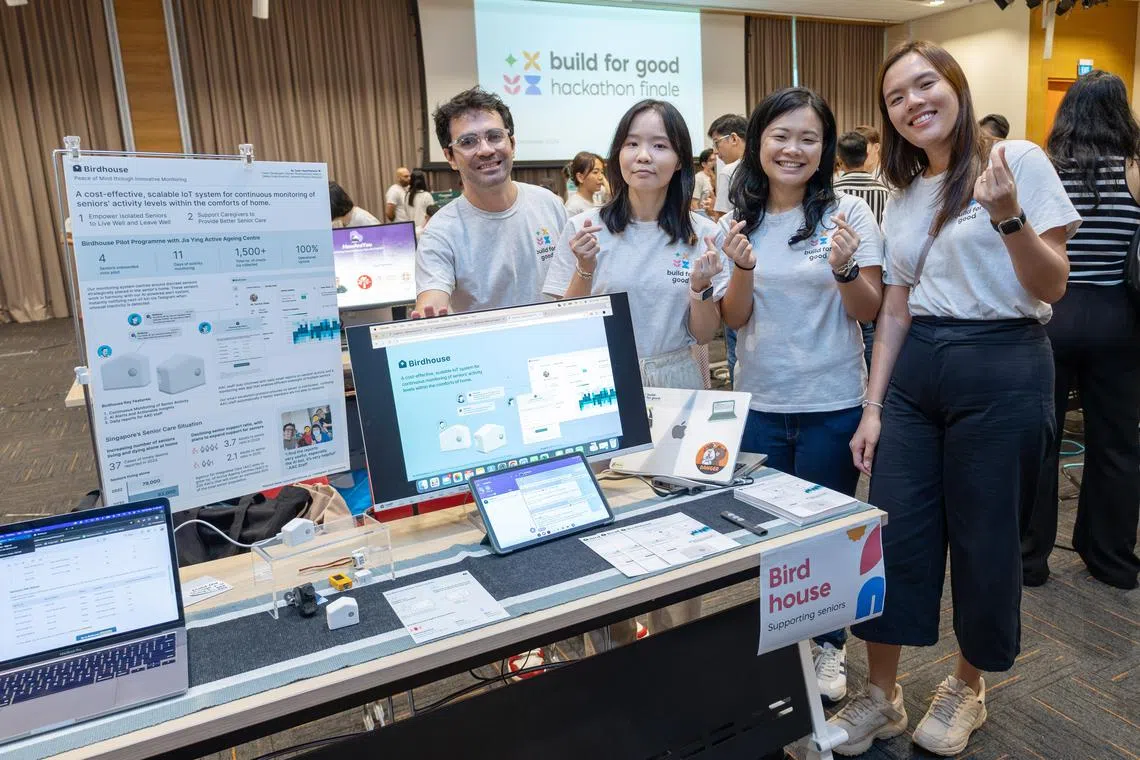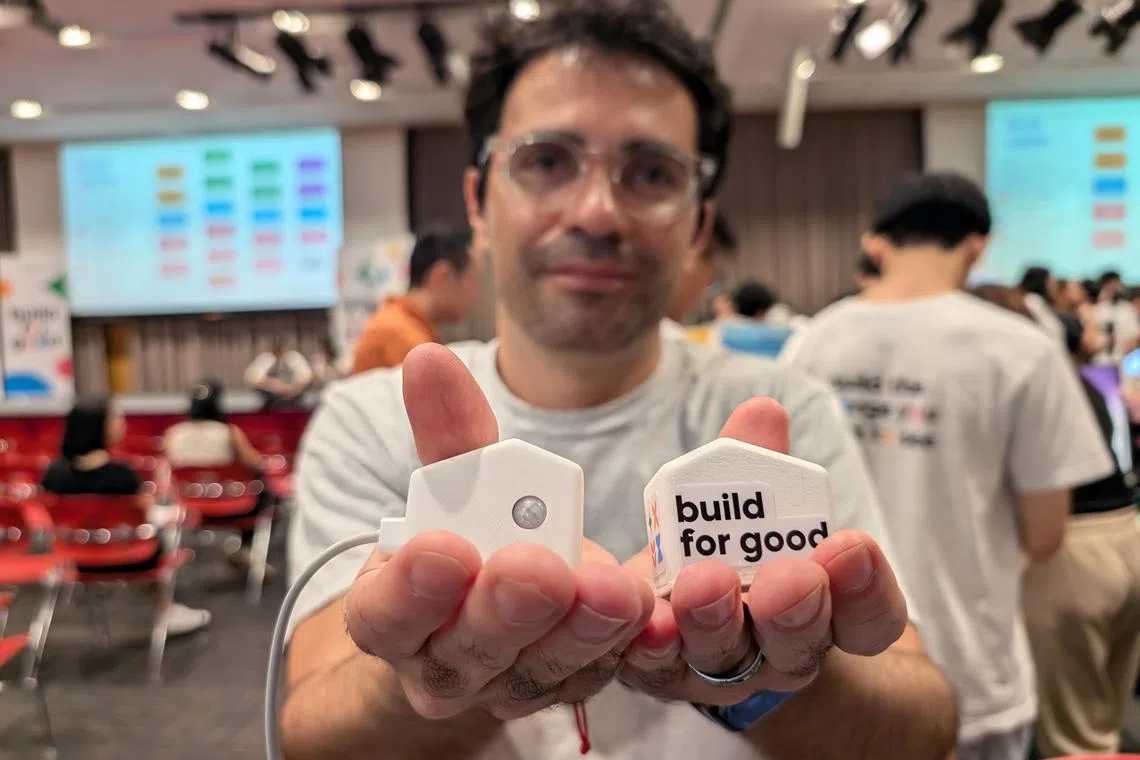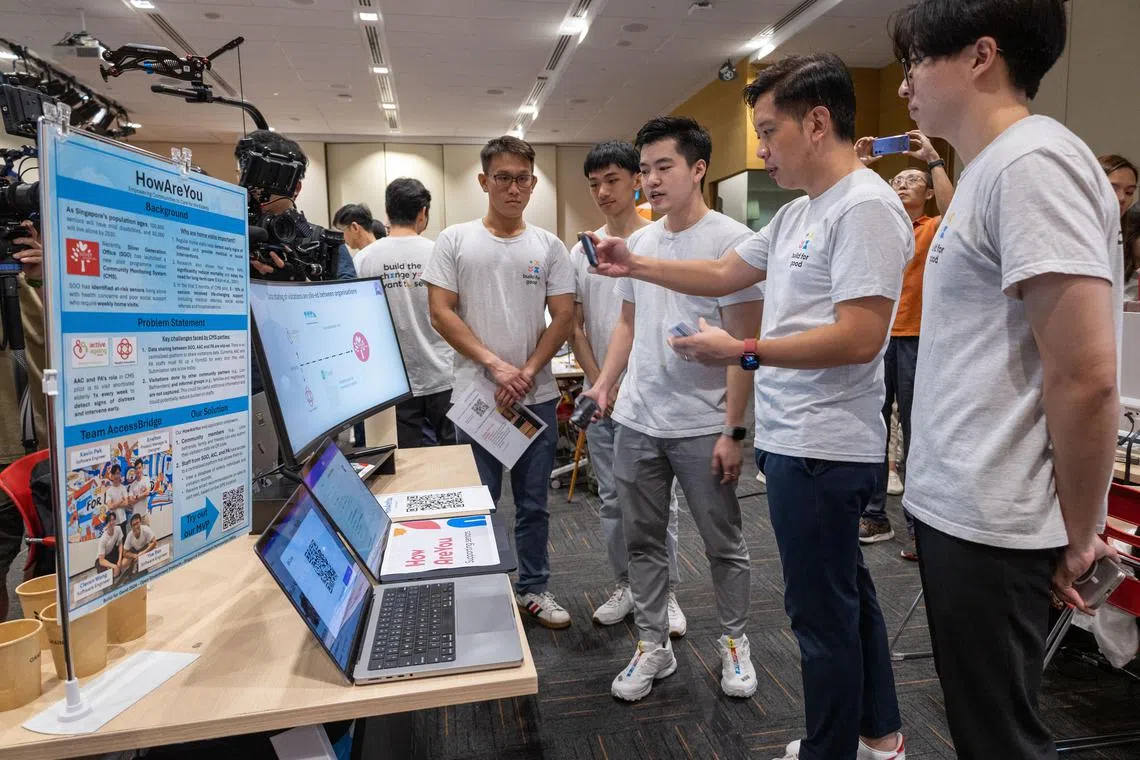Motion detector for seniors living alone among winners at citizen hackathon
Sign up now: Get ST's newsletters delivered to your inbox

Developer Carlos Chacon (left) and team members presenting their matchbox-size device called Birdhouse at the Build For Good 2024 citizen hackacthon finale.
PHOTO: LIANHE ZAOBAO
Follow topic:
SINGAPORE – Discreetly stuck on a door or sitting on a shelf, a matchbox-size device called Birdhouse monitors the daily activity of seniors living alone. If it senses no movement for an extended period, it alerts family members or social workers via an app or e-mail and they can then check on them.
Unlike many monitoring tools for seniors, Birdhouse does not use heat mapping, or record audio or video – it simply tracks signs of movement as an indication that the senior is still active.
Developed by a team that was placed among the top five at the Build For Good 2024 citizen hackathon organised by Open Government Products (OGP), the device is among efforts to use technology to help seniors living alone, so that they are not left unnoticed.
Developer Carlos Chacon, 42, said the prototype gadget does not include a camera as seniors interviewed by the team wanted privacy.
Mr Chacon told The Straits Times: “Birdhouse is ideal for caregivers who can’t visit seniors living alone daily. They can get frequent reports that indicate that the senior is okay, so this gives them peace of mind.”
The device is part of a push for new tech solutions for eldercare issues, which were the focus of at least seven of 21 teams at the hackathon finale on Sept 28 at the Lifelong Learning Institute in Paya Lebar.
Some 100 participants, including students, tech professionals and public officers, took part in the month-long hackathon organised by OGP, in collaboration with the Singapore Government Partnerships Office, to use technology to tackle healthcare, eldercare, sustainability and other societal issues.
Birdhouse, along with the four other winning teams, received funding of $20,000 and will undergo an eight-week accelerator programme to get its solution deployed.
Among the problem statements issued to the groups at the start of the hackathon was looking after seniors living alone and ways to improve efficiency in short-staffed eldercare services, said Mr Chew Chun-Liang, deputy chief of the Care Systems Integration Division at the Agency for Integrated Care, which worked with the teams to brainstorm problems and solutions.
The issues are especially pressing as Singapore faces an ageing population, he said.

Birdhouse team member Carlos Chacon with prototypes of a motion detector for seniors living alone to alert caregivers if there is no sign of movement.
ST PHOTO: OSMOND CHIA
It is estimated that a quarter of citizens will be aged 65 or older by 2030.
Minister of State for Culture, Community and Youth and Trade and Industry Alvin Tan said in an address to the hackathon teams that a device like Birdhouse is promising as it helps seniors preserve their privacy while making it easy for caregivers to take note of their well-being.
Other eldercare project groups developed prototypes that make caregiving more efficient.
Let’s Kaypoh, another winning project, is an app to encourage volunteers and members of the public to check on the well-being of seniors living alone near them by scheduling brief visits.
HowAreYou is a shared visitation-logging platform for social workers and caregivers to view and update a database of seniors to care for. The system logs visitations and individual needs, helping to streamline care and avoid duplication of resources.

Minister of State for Culture, Community and Youth and Trade and Industry Alvin Tan (second from right) at the HowAreYou project booth on Sept 28.
PHOTO: LIANHE ZAOBAO
But eldercare was not the only area of concern at the hackathon.
One team developed a Telegram bot called ScamHunt that lets users check for scams by uploading screenshots of suspicious advertisements or content on social media.
The bot uses generative artificial intelligence to ascertain if a particular ad is a scam and explain its assessment to users, said team member Ramesh Gopalkrishnan, 34.
The bot also categorises reported scams, by severity, frequency and type, to quickly compile reports that can be shared with law enforcement agencies, he said. This helps the authorities quickly identify and prioritise the most urgent scams circulating online.

